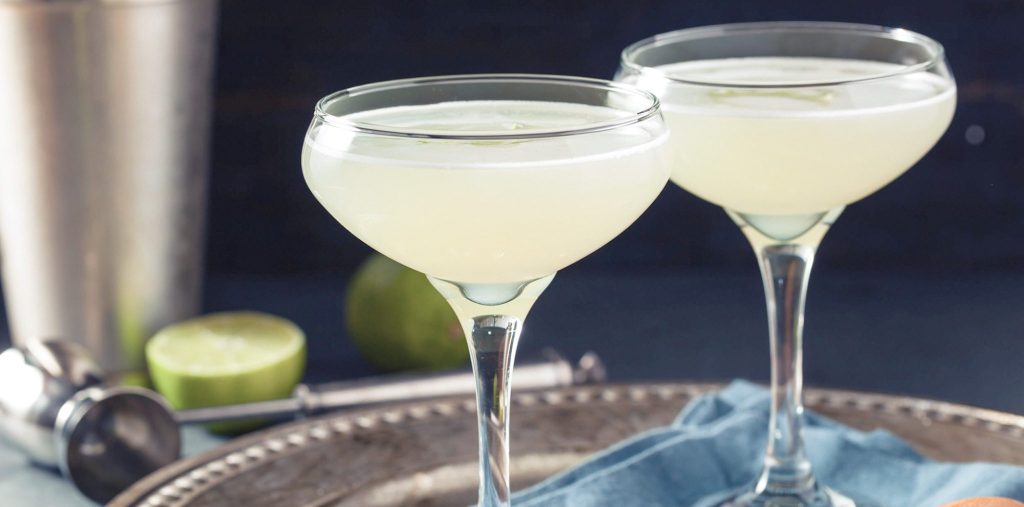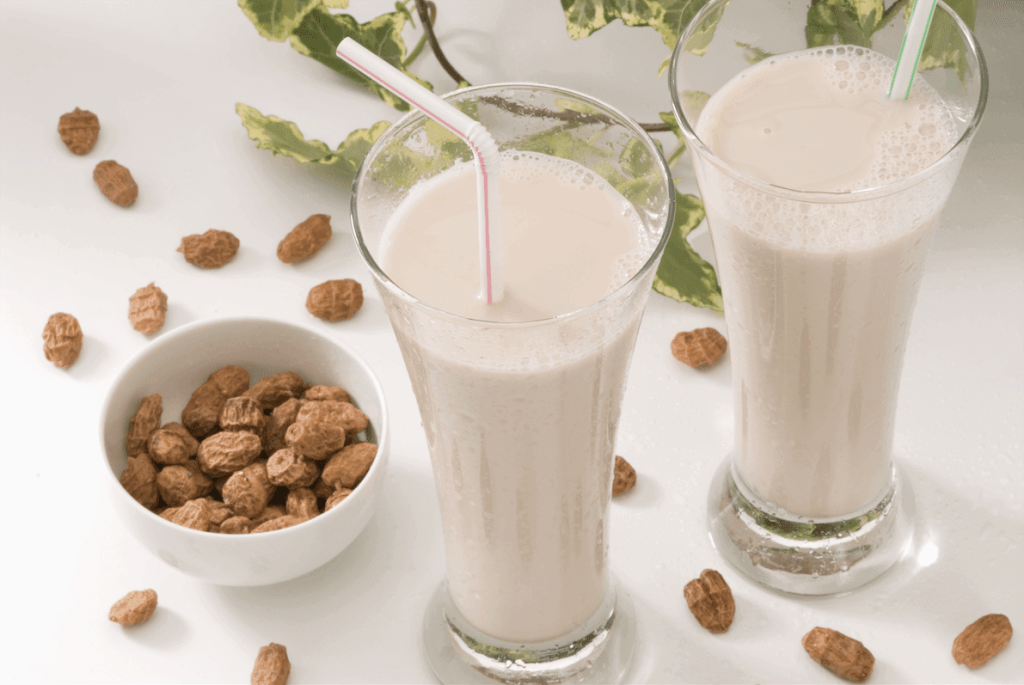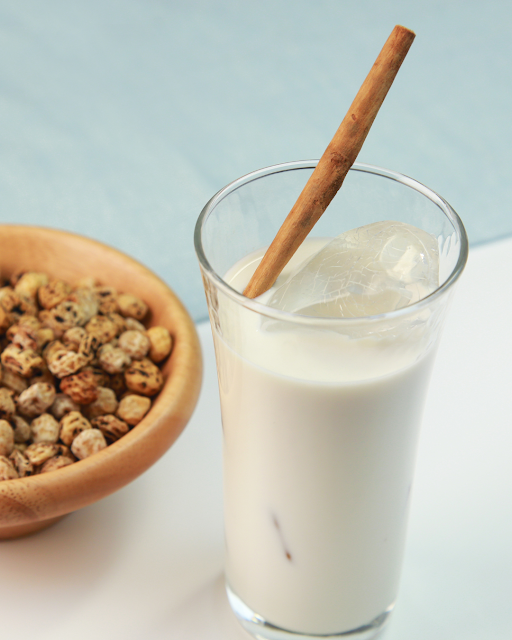Traditional Nigerian Beverages: Palm Wine, Kunun Aya, and Fura da Nono Recipes
Palm wine is a popular natural beverage produced from the sap of palm trees. It can be consumed in a variety of flavors from sweet unfermented to sour fermented.
Palm wine is a traditional alcoholic beverage that is widely consumed in various tropical regions, including parts of Africa, Asia, and South America. It is particularly popular in West Africa. Palm wine is derived from the sap of certain species of palm trees. Here is a basic overview of the process of making and enjoying palm wine:
1. Harvesting Palm Sap:
- The first step involves tapping the sap from the flower buds of certain palm tree species. The most common palms used for palm wine include the African oil palm (Elaeis guineensis) and various species of date palms.
2. Tapping Process:
- Tappers climb the palm trees and make incisions in the flower buds, allowing the sap to flow out. Bamboo containers or other receptacles are attached to collect the sap.
3. Fermentation:
- Once collected, the palm sap undergoes natural fermentation due to the presence of wild yeast in the environment. This fermentation process converts the sugars in the sap into alcohol.
4. Types of Palm Wine:
- There are two main types of palm wine: “Sweet” or unfermented palm wine, which has a mild, sweet taste and low alcohol content, and “Sour” or fermented palm wine, which has a higher alcohol content and a tangy flavor due to the fermentation process.

5. Collection and Storage:
- Palm wine is often collected in the morning and consumed fresh. It is perishable and should be consumed within a short period. In some cases, it may be stored in closed containers to slow down fermentation.
6. Serving:
- Palm wine is typically served in its natural state, without additional processing. It is poured into containers such as calabashes or glasses and enjoyed as a traditional beverage.
7. Cultural Significance:
- Palm wine holds cultural significance in many communities. It is often used in traditional ceremonies, celebrations, and social gatherings. The communal act of drinking palm wine is a shared experience in many cultures.
8. Regional Variations:
- The flavor and characteristics of palm wine can vary based on the specific type of palm tree used, the local climate, and the fermentation process. Different regions may have their own unique methods and preferences for making and consuming palm wine.
It’s important to note that the consumption of palm wine involves alcohol, and it should be enjoyed responsibly. Additionally, the methods and traditions associated with palm wine may vary across different cultures and communities.
Kunun Aya Also Called Tiger Nut – A Locally Made Juice in Nigeria – Recipe
In Nigeria, tigernut milk, also known as kunnu aya, is a beloved concoction that, in its most basic form, is made from just two ingredients: tigernuts and water. This beverage is similar to the Spanish drink horchata de chufa, where chufa means tigernut.
The tigernut itself is not actually a nut. It’s a tuber of the Cyperus esculentus crop. Naming confusion aside, making tigernut milk is a lot like making other nut milks. Soak the tigernuts in water, blend, strain the liquid out, and keep doing this until you’ve squeezed out all the milk.
Kunun Aya is a popular Nigerian drink made from tiger nuts. Tiger nuts, also known as aya in some regions, are small tubers that are rich in nutrients. Here’s a basic recipe for making Kunun Aya:
Ingredients:
- Tiger nuts (1 cup)
- Water (for soaking and blending)
- Coconut milk or any other milk of choice (optional)
- Sugar or sweetener of choice (to taste)
- Vanilla extract or flavoring (optional)
- Ground cinnamon (optional)
- Ice cubes (for serving)

Instructions:
1. Soak the Tiger Nuts:
- Rinse the tiger nuts thoroughly, then soak them in water for at least 12 hours or overnight. This softens the tiger nuts, making them easier to blend.
2. Blend the Tiger Nuts:
- Drain the soaked tiger nuts and blend them with fresh water until you get a smooth paste. You may need to add more water during blending to achieve the desired consistency.
3. Strain the Tiger Nut Milk:
- Strain the tiger nut paste using a fine mesh strainer, cheesecloth, or a nut milk bag to extract the tiger nut milk. This step helps remove the fibrous bits, leaving you with a smooth liquid.
4. Sweeten and Flavor:
- Sweeten the tiger nut milk with sugar or your preferred sweetener. Adjust the sweetness to your taste. Optionally, add vanilla extract or flavoring for an extra layer of taste. Ground cinnamon can also be added for a hint of spice.
5. Add Coconut Milk (Optional):
- For a richer flavor, you can add coconut milk or any other milk of your choice to the tiger nut milk. This step is optional but enhances the creaminess of the drink.
6. Chill and Serve:
- Refrigerate the Kunun Aya until it’s nicely chilled. Serve it over ice cubes for a refreshing experience.
7. Enjoy:
- Enjoy your homemade Kunun Aya made from tiger nuts. It’s a nutritious and delightful beverage.

Kunun Aya is often enjoyed for its nutty and slightly sweet flavor. Feel free to customize the recipe to suit your preferences, adjusting the sweetness and additional flavorings to your liking.
Make Fura da Nono: Traditional Nigerian Millet Drink
Fura da Nono is a traditional Nigerian drink made from millet and fermented cowpea. It’s a nutritious and refreshing beverage often enjoyed in Northern Nigeria. Here’s a basic recipe for making Fura da Nono with millet milk:
Ingredients:
For the Fura:
- 1 cup millet
- Water for soaking
- Water for blending
- 1 cup fermented cowpea (Nunu or Nono)
For the Millet Milk:
- 1 cup millet
- Water for soaking
- Water for blending
Additional Ingredients:
- Sugar or sweetener of choice (optional)
- Flavorings like vanilla or cinnamon (optional)

Instructions:
1. Prepare the Millet:
- Rinse the millet thoroughly and soak it in water for at least 4 hours or overnight. This softens the millet and makes it easier to blend.
2. Blend the Millet:
- After soaking, drain the millet and blend it with fresh water until you get a smooth millet paste.
3. Strain the Millet Milk:
- Use a fine mesh strainer or cheesecloth to strain the millet paste, extracting the millet milk. Discard the millet pulp or save it for other uses.
4. Prepare the Fura:
- In a separate bowl, mix the millet milk with fermented cowpea (Nunu or Nono) to create the Fura base. The cowpea provides a distinctive flavor and adds nutritional value.
5. Blend the Fura:
- Blend the Fura mixture until it reaches a smooth consistency. You can adjust the thickness by adding more millet milk or water.
6. Sweeten and Flavor (Optional):
- Add sugar or sweetener of your choice if you prefer a sweeter drink. You can also add flavorings like vanilla or cinnamon for extra taste.
7. Serve:
- Pour the Fura da Nono into glasses and serve it chilled.
Fura da Nono is not only a delicious beverage but is also rich in nutrients. It’s often consumed as a quick and nutritious snack or meal replacement. Adjust the sweetness and thickness according to your preferences, and feel free to experiment with additional flavors to suit your taste.
Read More Discover Adoyo, Tsamiya, and Zobo: Nigerian Medicinal Drinks with Recipes and Health Benefits
